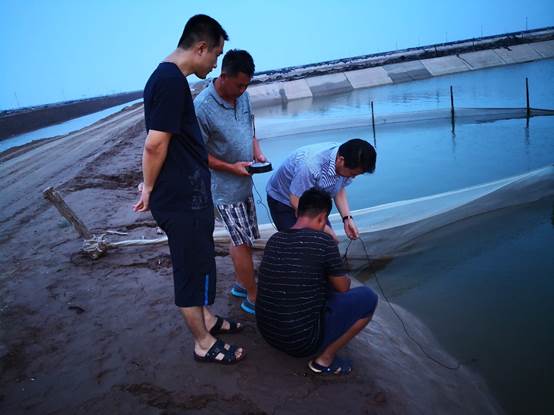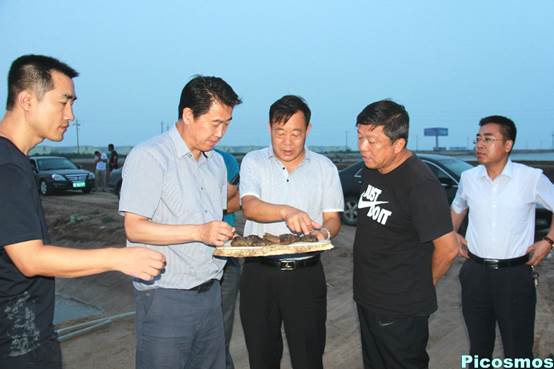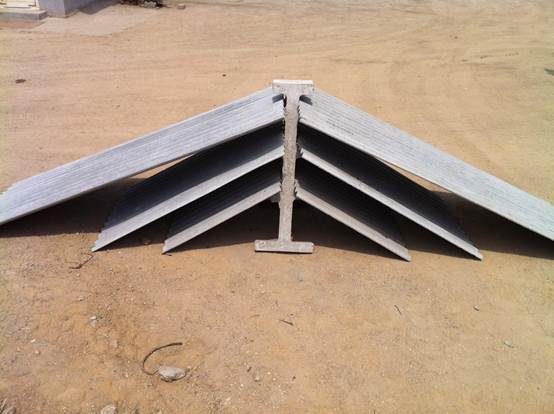Recently, experts from Yellow Sea Fisheries Research Institute(YSFRI)propose solutions for high temperature disaster prevention and control ofsea cucumber culture.
Since the end of July 2018, Liaoning and Hebei Province have been affected by the subtropical high-pressure cyclone. More than 90% of the pond-cultured sea cucumber has suffered a “destructive” high-temperature disaster, resulting into an economic loss of 7 billion yuan. A clinical team for aquatic animal pharmacology and disease led by Wang Yingeng, a research professor from YSFRI, conducted survey on the main sea cucumber culture in Shandong and found that more than 70% of the sea cucumber culture has been affected in Shandong Province with a yield loss of 30-80%. Although the autumn is coming, according to recent weather forecasts, the temperature in the coastal areas of Shandong is still high at 30-35℃. The temperature of the culture pond is still close to the temperature tolerance limit of the sea cucumber (Apostichopus japonicus). And the high temperature will also cause large numbers of death and decay of microalgae and large algae in the pond ecosystem, causing the rise concentration of harmful substances such as ammonia nitrogen and H2S at the bottom of the pond, which have toxic effects on sea cucumber. In order to effectively prevent future higher risks brought by the sustained high temperature, the team proposed the following precautions for the reference of sea cucumber farmers.
1. For the aquaculture ponds that have been affected, it is necessary to promptly remove the dead sea cucumbers and organic matter on the water surface to prevent them from decaying and sinking into the bottom, and avoid the further contamination and spread of pathogens in the bottom.
2. Under normal circumstances, the sea water from seaside is 2-3℃ cooler than that in the pond. Therefore, it is recommended to exchange the pond water during the night or early morning at the high tide period; meanwhile, increasing the water depth and frequency of water exchange will reduce the water temperature of the pond.
3. Shade nets can be installed above small ponds to prevent the pond water temperature from rising due to direct strong sunlight.
4. Use oxygenation equipments and increase the oxygenation time in the pond at night or in the early morning; at the same time, add particulate oxygen, water quality and sediments conditioner and micro-ecological agents into the pond as soon as possible to prevent the organic matter in the sediments from decaying under high temperature, in order to avoid more death of the sea cucumber.
5. Using water color regulator and other similar products on the whole pond can effectively reduce the transparency of the water body and achieve the effect of sunlight-blocking and cooling.
In addition, to enhance the risk-resistance, the following strategies are also needed to prevent the disaster of sea cucumber farming in the future:
1. Choose selected breeding with high temperature resistance for sea cucumber farming, such as “Shenyou No. 1”, “Dongke No. 1” and other new varieties which will improve the resistance of sea cucumber.
2. Systematically remodel the culture ponds such as the water inlets and outlets, valves, bottom circular ditch, high efficiency oxygenation equipment, pond deepening and dam slope solidation. In addition, the pond should be laid with hard adhering substrates such as tiles and multi-layered sea cucumber adhering substrates, which can not only effectively block sunlight and heat, but also form a three-dimensional space as a good habitat for the sea cucumber.
3. Adopt a variety of comprehensive culture methods such as “shrimp-sea cucumber polyculture” and “algae-sea cucumber polyculture”; construct an salt tolerant plants floating bed to shelter the pond sediments and absorb the excess organic matters ,in order to keep the pond eco-environment balance.
4. Resort to the method of grading culture, put large-sized seedlings in pond culture, shorten the cultivation cycle, and strive to reach the market sizebefore the high temperature period of the next year, and reduce the culture risk.
Constant efforts from YSFRI scientists will be madefor high temperature disaster prevention and control of sea cucumber aquaculture to reduce economic losses.

Professor Wang Yingeng and his team conduct an investigation during high temperature disaster of sea cucumber farming

Professor Wang and his team check the health status of sea cucumber during high temperature disaster

Multi-layered adhering substrates for sea cucumber culture
